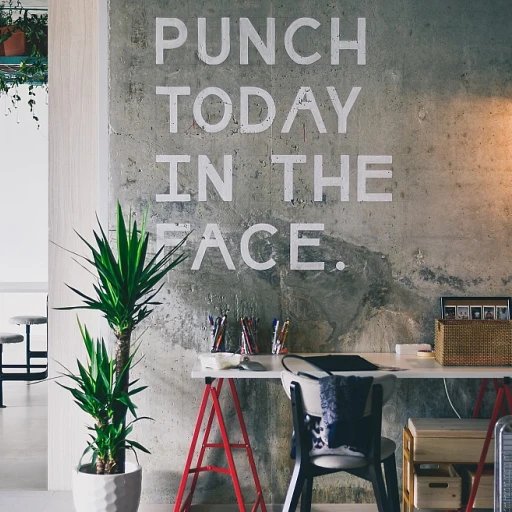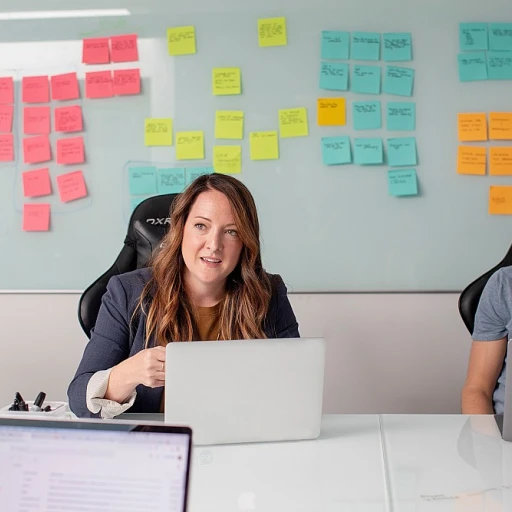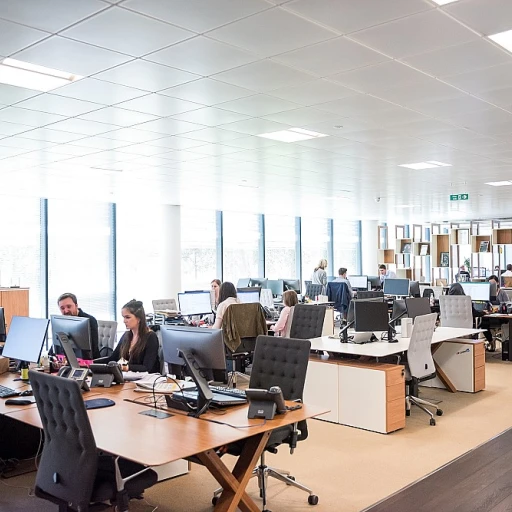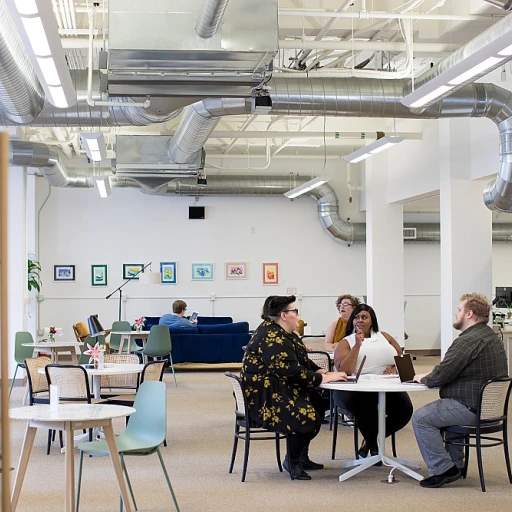
Understanding the Skills Gap
Recognizing the Evolving Landscape of Workforce Skills
In today's fast-paced world, the nature of work is constantly changing, driven by technological advancements and shifting market conditions. As businesses strive to remain competitive, the concept of skills gap has become increasingly significant. A skills gap occurs when there is a discrepancy between the skills that organizations need and the skills that employees possess. This gap presents a formidable challenge for workforce management, demanding a strategic approach to workforce planning and development.
Many companies struggle to build agile workforces that can adapt quickly to these evolving demands. To address this, organizations must adopt a growth mindset, encouraging their teams to embrace continuous learning and skill enhancement. By doing so, businesses can foster workforce agility, enabling employees to thrive in agile teams and respond effectively to change.
One of the critical aspects of preparing for future work is understanding that skills are not static. As industries evolve, so too must the skills of the workforce. This means companies must shift from a traditional skills-based hiring approach to one that prioritizes becoming adaptive. Decision making will rely heavily on an organization’s ability to forecast skill needs and align them with training and development opportunities.
Ultimately, workforce agility requires not only tactical planning but also cultivating an environment where employees are encouraged to pursue growth opportunities. Transforming a workforce into an agile workforce is a journey that involves both structured workforce planning and the infusion of soft skills necessary for managing change effectively.
The Role of Continuous Learning
Fostering Continuous Development
To bridge the skills gap effectively, organizations must embrace a culture of continuous learning that aligns with ever-evolving market conditions. It's not only about acquiring new abilities but also about fostering a growth mindset within the workforce. This can transform employees into adaptable agents of change, capable of maneuvering through the dynamic landscapes of their respective industries. Continuous learning encourages teams to work collectively, building agile environments that thrive on creativity and collaboration. By integrating agility into workforce planning, companies can ensure their talent is not only proficient but also ready to tackle new challenges as they arise.- Agile Workforce: Implementing an agile workforce model encourages employees to engage with cross-functional teams, improving their skill sets through diverse experiences and knowledge exchange.
- Skills Acquisition: Encourage a learning culture where workers have access to resources that help them develop new skills relevant to their roles and industry demands.
- Workforce Management: Proactive management decisions can support the upskilling and reskilling of teams, ensuring they are equipped to handle tasks with an agile mindset.
Leveraging Technology in Workforce Training
Integrating Technology to Enhance Employee Capabilities
In the rapidly changing business landscape, companies must look to technology as a pivotal tool in bridging the skills gap within their workforce. The future of work demands a more agile workforce, and leveraging technology effectively can streamline this transition. By embracing digital solutions, organizations can revolutionize their workforce management and training initiatives. To begin with, learning management systems (LMS) are increasingly becoming vital assets for companies aiming to build agile teams. These platforms offer robust capabilities for continuous learning, enabling employees to acquire new skills at their own pace and convenience. Moreover, LMSs allow organizations to track progress and adapt training programs in real time, ensuring the workforce remains aligned with market conditions. Additionally, artificial intelligence (AI) and machine learning (ML) have transformed the way businesses approach workforce planning. AI can predict skill shortages and guide decision-making in talent management, affording companies a competitive edge. By applying predictive analytics, organizations can shift towards skills-based hiring strategies, ensuring a blended workforce that accommodates both full-time and part-time roles. Furthermore, virtual reality (VR) and augmented reality (AR) technologies bring a new dimension to training efforts, fostering a growth mindset among workers. These immersive experiences can be particularly beneficial for skills-based training, allowing employees to practice and refine their abilities in a risk-free setting. This kind of engagement not only enhances workforce agility but also promotes a culture of innovation. For companies looking to build agile workforces, it is essential to incorporate technology in ways that foster cross-functional collaboration among teams. By nurturing an agile working environment, organizations can better respond to market demands, promoting a mindset of resilience and adaptability. Ultimately, the integration of technology in workforce training is not just about introducing new tools, but about shaping an organization's culture to embrace change. Investing in these technological advancements is a pivotal step in empowering employees and ensuring a future-proof workforce. For further insights on building an agile workforce through strategic management, explore this resource on enhancing employee engagement.Cultivating Soft Skills for Agility
Nurturing Workforce Flexibility through Soft Skills
In the constantly changing business environment of today, developing flexibility within the workforce is crucial. Soft skills, often undervalued, play a vital role in building an agile workforce. As organizations strive for adaptability in rapidly evolving market conditions, the ability of employees to pivot effectively between tasks and roles becomes indispensable.
Building agility starts with fostering a growth mindset among team members. A mindset that embraces change and continuous improvement enables companies to prep their talent to respond swiftly to shifts in market demands. Encouraging employees to take on new challenges and learn beyond their current roles not only enhances their professional development but also benefits the organization.
An agile workforce thrives on collaboration and communication. Employers need to focus on nurturing these essential skills across all levels of their organization. By encouraging cross functional teamwork, businesses can cultivate an environment where employees learn to work seamlessly with diverse teams, mirroring the blended workforce models that are becoming commonplace today.
Another key ingredient to workforce agility is effective decision-making. As companies navigate complex environments, the workforce must be equipped to make critical decisions with confidence and clarity. Training programs that simulate real-world scenarios can enhance employees’ decision-making skills, preparing them for challenges that lie ahead.
Ultimately, fostering soft skills within any organization’s workforce leads to greater adaptability and resilience. Companies that prioritize these skills in their workforce management practices can remain competitive and successfully anticipate and react to future work challenges. Through focused workforce planning, and building agile teams, organizations can lay the groundwork for a future-ready workforce.
Employer and Employee Collaboration
Fostering a Collaborative Effort for Workforce Agility
Building an agile workforce requires collaboration between employers and employees to effectively bridge the skills gap. This partnership is crucial for adapting to changing market conditions and ensuring business continuity. Both parties play a pivotal role in developing a workforce ready to tackle the dynamic nature of today's work environment.- Cultivating a Growth Mindset: Employers should encourage a growth mindset within their organizations. By promoting an environment that values learning and innovation, companies empower employees to take ownership of their skill development. This approach nurtures an agile workforce that is well-equipped to handle change effectively.
- Engagement in Workforce Planning: Employees should actively engage with their organizations' workforce planning strategies. By being involved, they can provide valuable insights into their own development needs and aspirations. Management can then align training and development programs with these insights, ensuring employees feel valued and invested in.
- Cross-Functional Teams: Collaboration can also be enhanced through the formation of cross-functional teams. These teams bring together diverse skill sets and perspectives, fostering creative problem-solving and agility. Team members can learn from one another, contributing to a culture of continuous learning and adaptation.
- Adopting an Agile Mindset: Both employers and employees must adopt an agile mindset to thrive in today's fast-paced work environment. This involves being open to change and ready to pivot strategies and roles as market conditions evolve. Embracing agile working methodologies can also facilitate this transition.
- Blended Workforce Models: Companies can benefit from blended workforce models that incorporate both full-time employees and contract workers. This approach allows for flexibility in scaling up or down based on project demands, ensuring that organizations remain agile and responsive.
Future-Proofing Your Workforce
Preparing for the Future of Work
In a rapidly changing business landscape, future-proofing your workforce is essential for maintaining a competitive edge. Companies must be proactive in their workforce planning to ensure they are equipped to handle market conditions that evolve over time. This involves not only skills-based hiring but also fostering an agile mindset among employees.
To build an agile workforce, organizations should focus on:
- Continuous Learning: Encourage a culture where employees are motivated to learn and adapt. This can be achieved by offering training programs that are aligned with the latest industry trends and technologies.
- Blended Workforce Models: Embrace a combination of full-time, part-time, and freelance workers. This flexibility allows companies to respond swiftly to changes in demand and leverage diverse talents.
- Agile Teams: Develop cross-functional teams that can collaborate effectively. Agile teams are better equipped to tackle complex problems and innovate, as they bring together a range of perspectives and skills.
- Growth Mindset: Cultivate a mindset that values learning from failures and encourages experimentation. This approach helps employees become more resilient and adaptable in the face of change.
- Technology Integration: Leverage technology to enhance workforce agility. Tools that support remote work, collaboration, and project management can help teams stay connected and productive.
By focusing on these areas, companies can build agile workforces that are prepared to meet the challenges of tomorrow. Workforce management becomes more effective when both employers and employees collaborate towards shared goals, ensuring that the organization remains resilient and competitive in an ever-evolving market.










